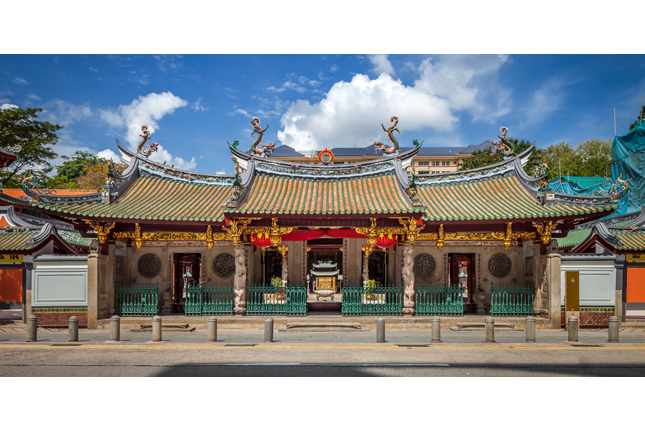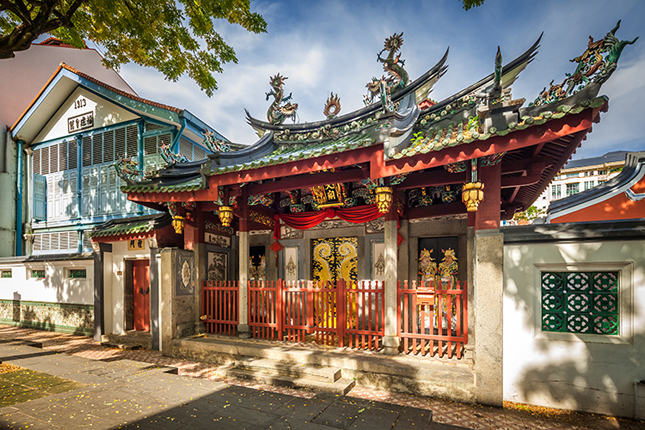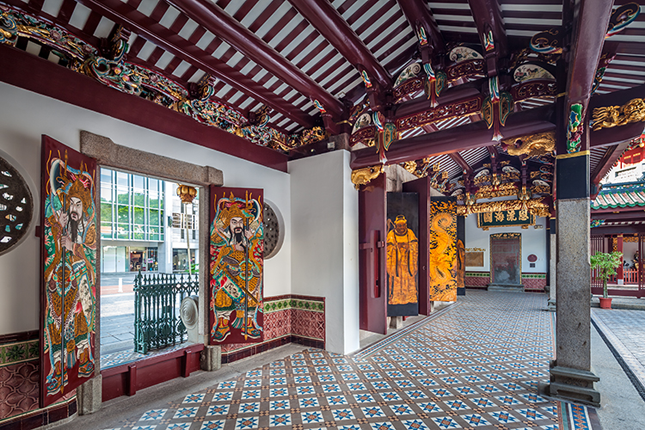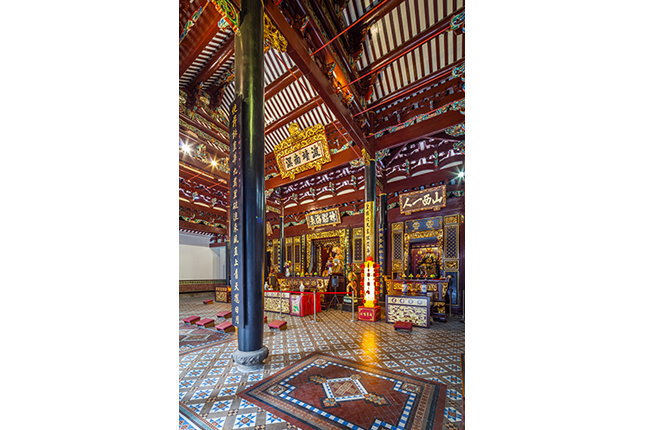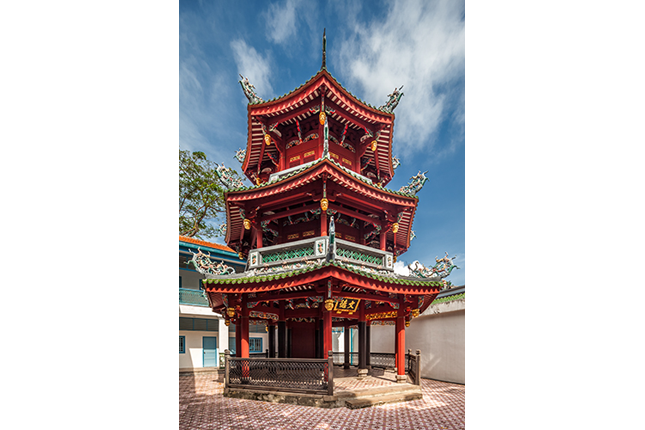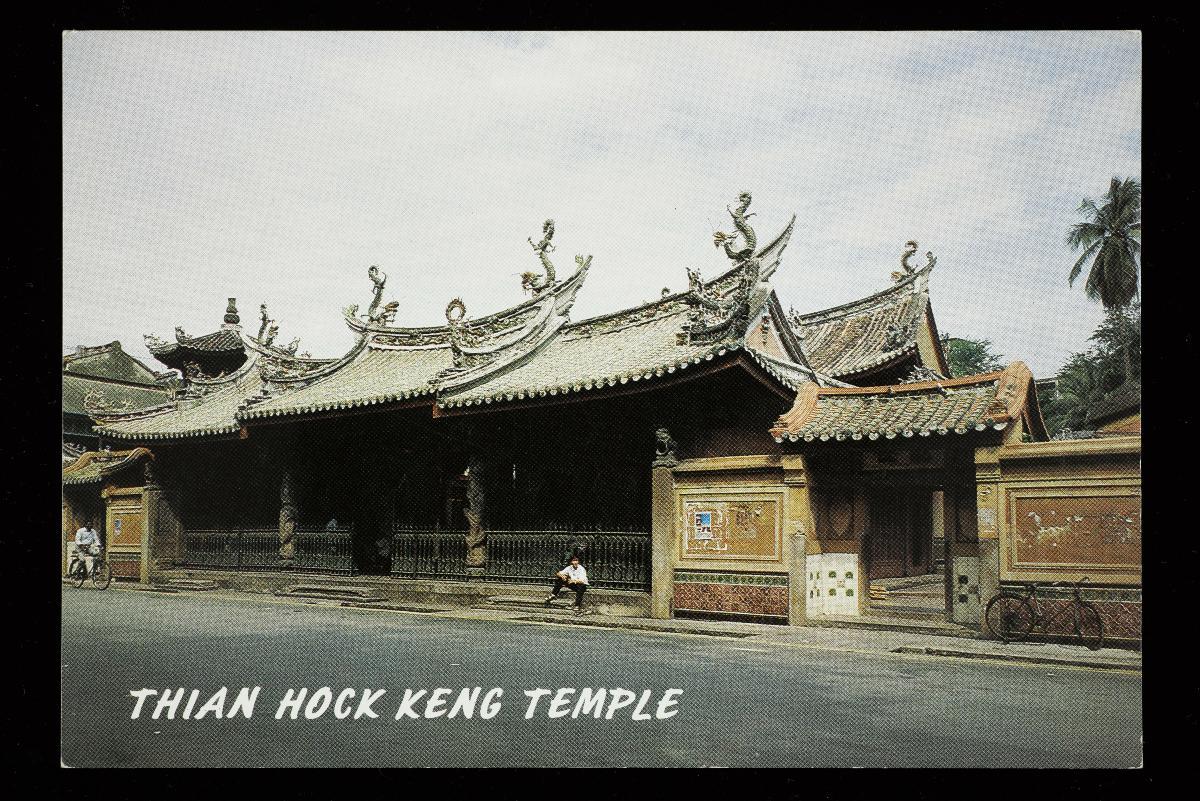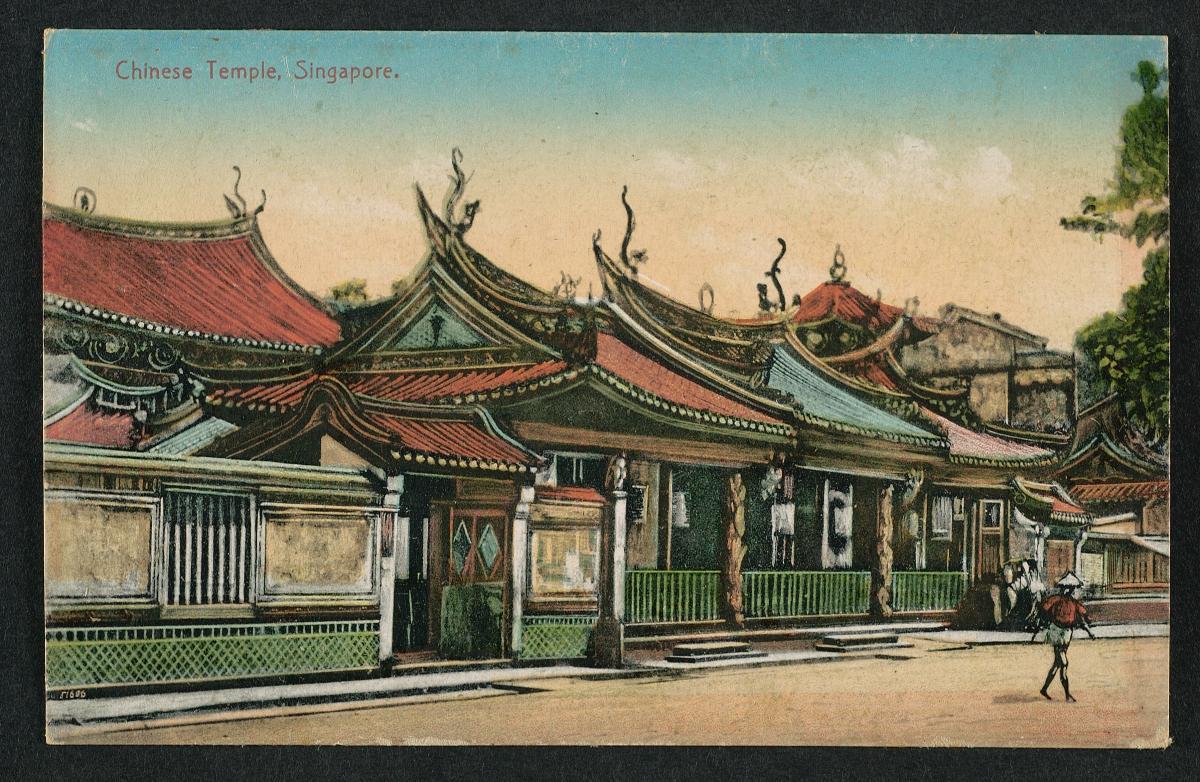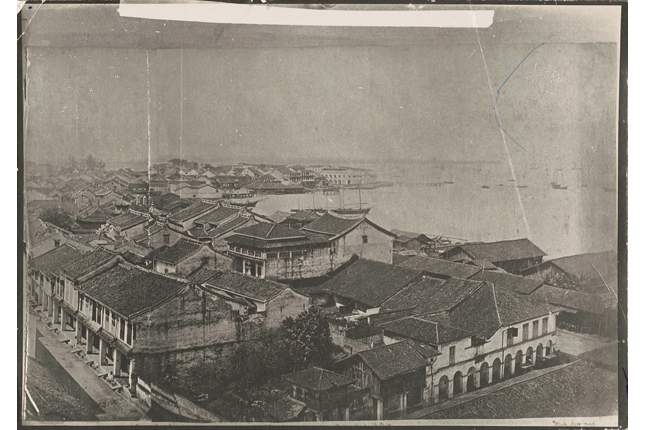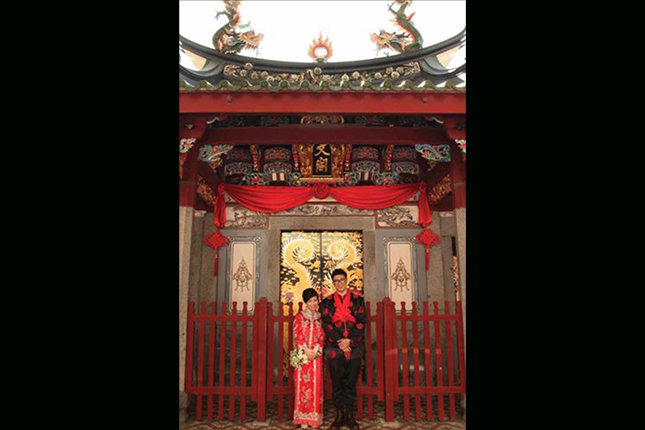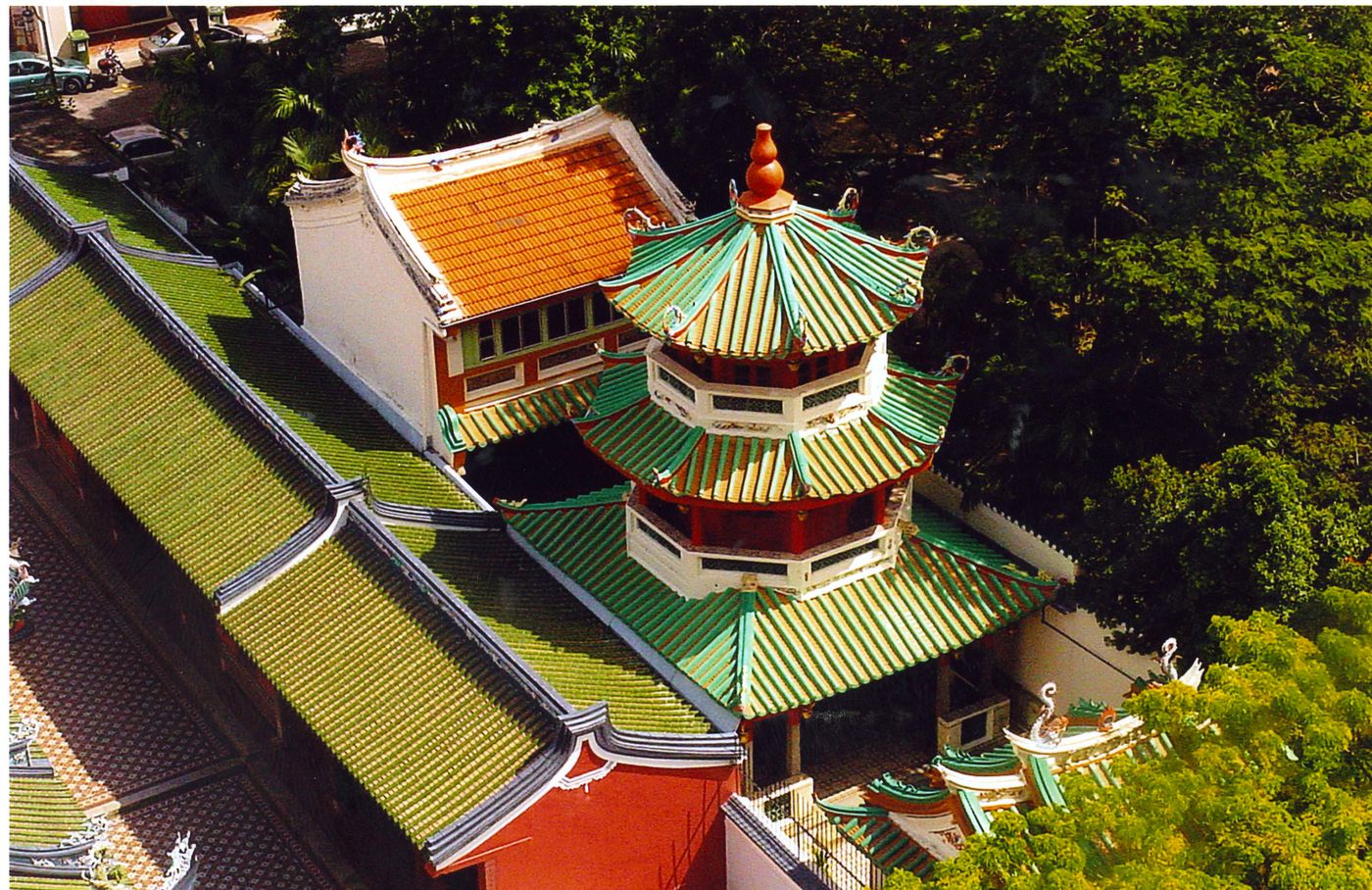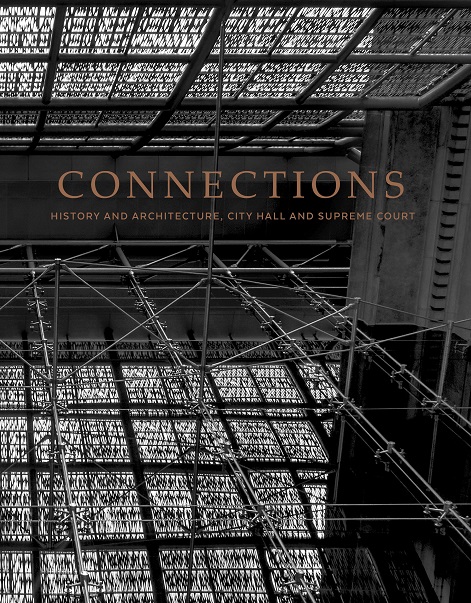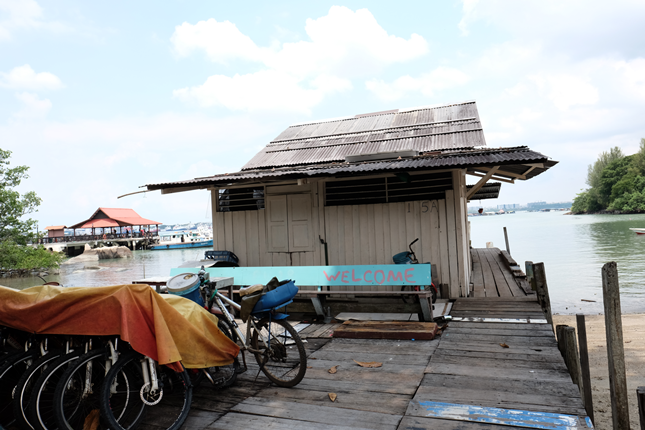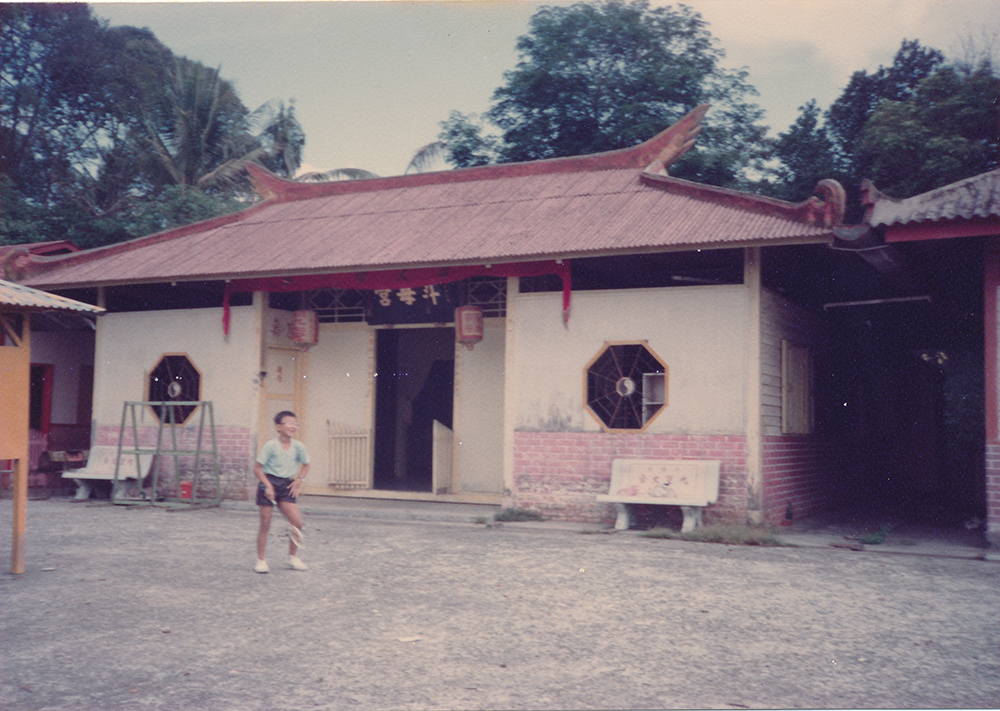Thian Hock Keng (天福宫, ‘Palace of Heavenly Happiness’) is one of Singapore’s oldest Hokkien temples. It is located near Al-Abrar Mosque, Former Nagore Dargah, and Telok Ayer Chinese Methodist Church, standing on what used to be the shoreline of Telok Ayer Basin. In addition to its religious function, Thian Hock Keng is also a standing monument to the community spirit of Chinese pioneers in Singapore.
A Temple for All Tangren
The temple’s history began when the first Chinese immigrants disembarked on the shore of Telok Ayer Basin, which lay along the present-day Telok Ayer Street. Upon their arrival, the Chinese – many from Fujian Province, China – visited a little shrine just in front of the shoreline to give thanks to Mazu (妈祖), Goddess of Seas, for their safe voyage. As the number of Chinese immigrants increased over the years, it was decided that a permanent temple should be built to replace the makeshift shrine.
Construction of the new temple began in 1839 and was completed three years later. All the building materials were imported from China, and the intricate carvings and decorations were all crafted by artisans who hailed from Fujian Province. The total building cost was estimated to be 30,000 Spanish dollars. Donations came mainly from wealthy Hokkien businessmen and community leaders.
Inscribed on a granite tablet set in the wall of the entrance hall is a list of donors who contributed to the construction. Tan Tock Seng (陈笃生), a Malaccan-born pioneer and well-known philanthropist, was recorded to have given a handsome sum of 3,000 Spanish dollars and was the largest contributor of funds. While Thian Hock Keng is largely associated with the Hokkien community, it is evident from the same stele that the founding committee had desired it to be a temple for all tangren (唐人), that is, Chinese from all dialect groups.
Deities
The statue of Mazu in the temple was brought from China and enshrined as the chief deity following a grand procession in 1840. Other deities installed in the temple include Baosheng Dadi (保生大帝, invoked as the God of Medicine and Health), Guansheng Dijun (关圣帝君, worshipped for spiritual protection), Confucius (孔子, a favourite among students and their parents), and the Goddess of Mercy (观音菩萨). These deities clearly reveal the ardent desires of early Chinese immigrants settling in their new home.
Hokkien Huay Kuan
In 1840, a group of prominent Chinese philanthropists established Hokkien Huay Kuan (福建会馆, ‘Hokkien Association’) within the compound of Thian Hock Keng. The association’s main objectives included promoting education among the local Chinese community, providing social welfare and aid to new immigrants from Fujian Province, as well as upholding Chinese language, culture, and values. Even today, the association continues to play an important role in contributing towards the society at large.
Architecture and Furnishings
Built in the traditional Hokkien architectural style, Thian Hock Keng features curved roof ridges with distinctive upturned ‘swallow tail’ end sweeps. On the roofs of the entrance hall and the main hall, four dancing dragons symbolising justice and power flank a blazing pearl representing immortality and perfection. The decorative elements on the roofs were made using a special technique called jian nian (剪粘), which literally means ‘cut and paste’. Colourful ceramics were meticulously cut into smaller pieces and pasted to create beautiful mosaic figures. Such ornamentation can also be found in other temples in Singapore, such as Tan Si Chong Su, Yueh Hai Ching Temple, Hong San See, and Lian Shan Shuang Lin Monastery.
Like many Chinese temples, Thian Hock Keng has the standard layout of a three-hall typology, comprising an entrance hall, a main hall, and a rear hall. In addition, it has additional rows of side halls on either side of the primary prayer halls.
There is a plaque and scroll in the main hall which is inscribed with calligraphy bestowed by Emperor Guangxu of Qing China in 1907. It reads bo jing nan ming (波靖南溟), which can be translated as ‘gentle waves on the southern seas’. Yueh Hai Ching Temple is the only other temple in Singapore that also received a similar imperial favour.
Chongwen Ge
In the past, two institutions flanked Thian Hock Keng: Chongwen Ge (崇文阁, ‘Institute for the Veneration of Literature’), Singapore’s first Chinese school; and Keng Teck Whay (庆德会), a private Straits Chinese self-help association. In 1849, an outstanding Hokkien Peranakan merchant, Tan Kim Seng (陈金声), spearheaded the construction of Chongwen Ge. Besides the Hokkiens, members of the Hakka and Teochew communities also contributed generously to the project. Originally, Chongwen Ge comprised the Chongwen Pagoda and Chong Boon Gate. Chong Hock Pavilion was added in 1913.
Having outgrown its facility within the temple grounds, Hokkien Huay Kuan moved into Chong Hock Pavilion in 1915. That same year, it established Chong Hock Girls’ School (崇福女校), one of Singapore’s earliest Chinese schools for girls. The name ‘Chong Hock’ (崇福) was an honorary title given to Mazu in the imperial court during the Song Dynasty (960–1279).
Thian Hock Keng Today
The temple remains an important place of worship among local Chinese Buddhists and Taoists. Between 1998 and 2000, Thian Hock Keng underwent a major restoration which earned it an honourable mention in the UNESCO Asia-Pacific Heritage 2001 Awards for Cultural Heritage Conservation.
Thian Hock Keng and Chongwen Ge were gazetted collectively as a National Monument.
Our National Monuments
Our National Monuments are an integral part of Singapore’s built heritage, which the National Heritage Board (NHB) preserves and promotes for posterity. They are monuments and sites that are accorded the highest level of protection in Singapore.




